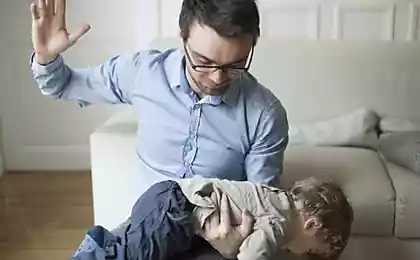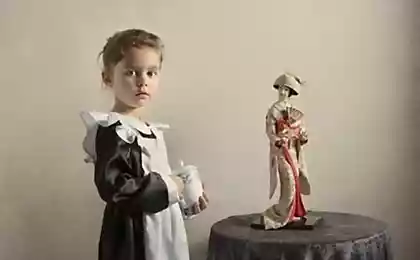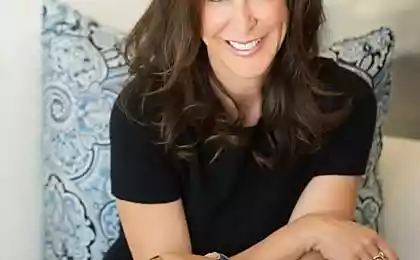676
What are the consequences of corporal punishment of child
Psychology slap
The word "discipline" comes from the root word disciplinare, meaning to teach, to teach. Nevertheless, most American parents believe that this concept also involves the use of corporal punishment or spanking:
Some parents choose to use physical punishment as a disciplinary sanction for the following reasons:
Fifty five million six hundred sixty three thousand twenty nine
Public opinion in 2012
Across the country, in every state, parents retain the legal right to beat their children if violence remains "within reasonable limits", – "reasonable limits" are determined by the court in each individual case.
Statistics show who agree that children sometimes need a "good spanking»:
School
The use of corporal punishment in school is allowed by law in 19 U.S. States: Alabama – Arizona – Arkansas – Colorado – Florida – Georgia – Idaho – Indiana – Kansas – Kentucky – Louisiana – Mississippi – Missouri – North Carolina – Oklahoma – South Carolina – Tennessee – Texas – Wyoming.
In the 2009-10 school year, 11.6% of high schools were allowed to spank children as a disciplinary measure, and in 8.1% of schools such influence, indeed, was used. At a rough count in 8,000 schools across the country used spanking as a disciplinary measure [in those years, there were 98,817 public schools].
According to the calculations it is assumed that in 2009-2010 in schools spanked children:
In the world
USA in the minority.
Opinion of experts
The UN Commission for children's rights believes that physical punishment that causes pain to any extent and discomfort (even light) is abuse of authority against children. The Commission argues that the elimination of physical punishment of children is "a key strategy, leading to the reduction and prevention of any forms of violence in society."
The American pediatric Academy recommends not to use physical punishment as a potential risk outweighs the potential benefits.
A meta-analysis of 88 scientific studies that were conducted for 62 years, showed that 94% of researchers believe: corporal punishment lead to undesirable consequences, such as:
The impact of corporal punishment on the child
Children who are beaten less than two times a month, at the age of 3 years, with 17% likely to be aggressive at age 5 years.
Children who are beaten at the age of 3 years more often than twice a month, at the age of five years will be aggressive with 49% probability.
It affects:
Children who are hit, are becoming more criminal tendencies
Criminal behaviour involves the aggression and violation of the rules. It is affected by:
Children who are beaten, worse it develops
Speech abilities of the child at the age of 9 years old who was beaten and who was not beaten: [38% difference based on beat or not]
The brain of children who are beaten, generates less gray matter.
Children who are beaten at least 12 times a year for three years, in adulthood have less grey matter than children who hit the minimum or not beat at all.
The word "beat" means beating something, on occasion, for disciplinary purposes, and given that it is not beyond the scope, not lead to injuries, it was not done with malice.
The reduction in the gray matter of young adults who were beaten as a child:
Even in the level of education of children who were beaten, showed 10 points less in IQ tests. 75% is due to the fact that they were beaten. In other words, stop beating the children and they will receive 7.5 points higher in IQ tests.
The use of corporal punishment affects a delay in development or delay in development (and thus bad behavior) causes corporal punishment? Of the persons interviewed within this research, beat in under 4 years – until these areas of the brain are still forming.
Why does gray matter matter? Gray matter contributes to the processing of information. Especially in these areas it helps to make decisions and reflect. The more gray matter in these brain areas, the better people can assess the impact and benefits.
What influences:
What is the impact of corporal punishment received in childhood, when children grow up
Adults who were beaten in childhood are more likely to have psychological distress and dependence on alcohol or drugs.
When we talk about those who were beaten, I mean: pushed, grabbed, shoved, slapped or hit lightly, but we are not talking about serious physical violence (beating, leaving marks, bruises or injuries), sexually abused, emotionally neglected, physically or emotionally, or allow violence by a partner.
The percentage of psychiatric disorders related to beating:
With the U.S. population at 316.1 million people, 145,360,000 Americans suffering from psychiatric disorders. In any case, from 2,907,200 to 10,175,200 man can be saved, if not to beat them.
Adults who were beaten as a child, have more health problems
If a child is beaten, more likely that an adult will develop the following problem with physical health:
Adults who hit, more practice domestic violence and have various violations
If corporal punishment do not work, parents who relied on them, typically reinforce such punishment, and not reviewing a strategy.
In Canada, 75% of physical abuse experienced by children associated with corporal punishment.
In the USA children who have experienced physical violence, recognize that 66% of this violence started when they experienced corporal punishment.
In comparison with children who do not beat children, beat:
The people were punished by use of physical force in childhood,
An alternative to corporal punishment
85% of parents Express their anger in a medium or high level, when he hits their children.
54% of mothers say that in half the cases they were wrong, when he hit a child.
85% of parents say they would prefer not to beat my children if they had an alternative that, in their opinion, had worked well.
A healthy system of training and education prepares children to achieve in life:
In fact the most effective deterrent for children in such situations is to see that you are afraid for them... and not something you slapped them.published
A Translation Of Alena Gasparian
Source: www.pravmir.ru/rebenka-bili-usa/
The word "discipline" comes from the root word disciplinare, meaning to teach, to teach. Nevertheless, most American parents believe that this concept also involves the use of corporal punishment or spanking:
- “Bashing upsets me more than you”
Some parents choose to use physical punishment as a disciplinary sanction for the following reasons:
- “When I was a child, I was beaten and I turned out okay!”
- “I better to spank them than then they beat up the police!”
Fifty five million six hundred sixty three thousand twenty nine
Public opinion in 2012
Across the country, in every state, parents retain the legal right to beat their children if violence remains "within reasonable limits", – "reasonable limits" are determined by the court in each individual case.
Statistics show who agree that children sometimes need a "good spanking»:
- Parents: 72%
- Fathers: 78%
- Mother: 66%
- Fathers: 78%
- Asians/Pacific population: 30%
- Men: 47%
- Women: 12%
- Men: 47%
- White: 71%
- Men: 78%
- Women: 64%
- Men: 78%
- Hispanic population: 74%
- Men: 72%
- Women: 76%
- Men: 72%
- American Indians/Alaska natives: 75%
- Men: 86%
- Women: 64%
- Men: 86%
- Black: 82%
- Men: 90%
- Women: 74%
- Men: 90%
- Those who did not receive secondary education: 78%
- Men: 76%
- Women: 80%
- Men: 76%
- Persons with secondary education: 75%
- Men: 83%
- Women: 66%
- Men: 83%
- Persons with secondary education: 70%
- Men: 79%
- Women: 61%
- Men: 79%
- Persons with University education: 67%
- Men: 70%
- Women: 63%
- Men: 70%
- Persons with non-Christian religion: 66%
- Christians: 78%
- Republicans: 80%
- Person with independent political convictions: 69%
- Democrats: 65%
- The inhabitants of the American South: 78%
- Residents of the Midwest in the US: 72%
- Residents of the American West: 64%
- Residents of the American northeast: 63%
School
The use of corporal punishment in school is allowed by law in 19 U.S. States: Alabama – Arizona – Arkansas – Colorado – Florida – Georgia – Idaho – Indiana – Kansas – Kentucky – Louisiana – Mississippi – Missouri – North Carolina – Oklahoma – South Carolina – Tennessee – Texas – Wyoming.
In the 2009-10 school year, 11.6% of high schools were allowed to spank children as a disciplinary measure, and in 8.1% of schools such influence, indeed, was used. At a rough count in 8,000 schools across the country used spanking as a disciplinary measure [in those years, there were 98,817 public schools].
According to the calculations it is assumed that in 2009-2010 in schools spanked children:
- With disabilities
- Boys: 28,655
- Girls: 5,283
- Boys: 28,655
- Without disabilities
- Boys: 140,775
- Girls: 43,753
- Boys: 140,775
- All boys: 169,430
- Just girls: 49,036
- Total: 218,466
In the world
USA in the minority.
- 145 countries (60.3% of the world population) there are bans on physical punishment:
- In 42 countries (10% of the world population) it is prohibited to beat children at home, at school and in places of imprisonment: Albania – Argentina – Austria – Bolivia – Brazil – Bulgaria – Cape Verde – Republic Of The Congo – Costa Rica – Croatia – Curacao – Cyprus – Denmark – Finland – Germany – Greece – Honduras – Hungary – Iceland – Israel – Kenya – Latvia – Liechtenstein – Luxembourg – Macedonia – Malta – Moldova – Netherlands – New Zealand – Norway – Poland – Portugal – Romania – South Sudan – Spain – Sweden – Slovenia – Tunisia – Turkmenistan – Ukraine – Uruguay – Venezuela
- In 52 countries (34% of the world population) it is prohibited to beat children in schools and in places of imprisonment: Andorra – Armenia – Azerbaijan – Belarus – Belgium – Bosnia and Herzegovina – Cambodia – Cameroon – Canada – China – Cuba – Czech Republic – Dominican Republic – El Salvador – Estonia – Ethiopia – Fiji – Gabon – Georgia – Guinea-Bissau – Haiti – Hong Kong – Ireland – Italy – Jordan – Kuwait – Kyrgyzstan – Laos – Lithuania – Macau – Malawi – Mali – Marshall Islands – Monaco – Montenegro – Namibia – Nicaragua – Philippines – Russia – San Marino – Serbia – Slovakia – Slovenia – South Africa – Switzerland – Taiwan – Thailand – Turkey – United Kingdom – Uzbekistan – Vietnam – Zambia
- In 27 countries (10% myrrh of the population) it is forbidden to hit children in schools: Afghanistan – Algeria – Bahrain – Bangladesh – Belize, Burundi, Chad, Colombia, Democratic Republic of Congo – Djibouti – Ecuador – Guinea – Iran – Japan – Kiribati – Libya – Moorish Islands – Micronesia – Mongolia – Oman – Peru – Samoa – Sao Tome and Principe Tonga – United Arab Emirates – Vanuatu – Yemen
- In 24 countries (6% of the world population) it is prohibited to beat children only in detention: Bhutan – Burkina Faso – Chile – Côte D'ivoire – Egypt – France – Jamaica – Kazakhstan – North Korea – South Korea – Lebanon – Liberia – Morocco – Mozambique – Panama – Paraguay – Senegal – Seychelles Sint Maarten Solomon Islands – Suriname – Swaziland, East Timor, Uganda
- In 53 countries (39.6% of world population) is not prohibited to beat children legally: Angola – Antigua and Barbuda – Aruba – Australia – Bahamas – Barbados – Benin – Botswana – Brunei – Comoros Islands – Dominica – Eritrea – Gambia – Ghana – Grenada – Guatemala – Guyana – India – Indonesia – Iraq – Lesotho – Madagascar – Malaysia – Maldives – Mauritius – Mexico – Myanmar – Nauru – Nepal – Niger – Nigeria – Pakistan – Palau – Palestinian territory – Papua New Guinea – Qatar – Rwanda – Saint Kitts and Nevis – Saint Lucia- Saint Vincent and the Grenadines – Saudi Arabia – Sierra Leone – Singapore – Somalia – Sri Lanka – Sudan – Syria – Tajikistan – Tanzania – Trinidad and Tobago – Tuvalu – United States – Zimbabwe
- In 2 countries (2% of the world population) do not know what are the laws on corporal punishment: Central African Republic – Equatorial Guinea
Opinion of experts
The UN Commission for children's rights believes that physical punishment that causes pain to any extent and discomfort (even light) is abuse of authority against children. The Commission argues that the elimination of physical punishment of children is "a key strategy, leading to the reduction and prevention of any forms of violence in society."
The American pediatric Academy recommends not to use physical punishment as a potential risk outweighs the potential benefits.
A meta-analysis of 88 scientific studies that were conducted for 62 years, showed that 94% of researchers believe: corporal punishment lead to undesirable consequences, such as:
- the increase in child aggression
- the increase in anti-social and criminal behaviour of children
- the deterioration of relations between children and parents
- deterioration of mental status in children
- the increase in the risk of becoming a victim of physical violence
- increased aggressiveness of adults
- the increase in antisocial and criminal behaviour in adults
- deterioration of mental status in adults
- the increase in risk to hurt their own child or spouse
- increase examples of immediate obedience
The impact of corporal punishment on the child
Children who are beaten less than two times a month, at the age of 3 years, with 17% likely to be aggressive at age 5 years.
Children who are beaten at the age of 3 years more often than twice a month, at the age of five years will be aggressive with 49% probability.
It affects:
- Children's aggression at age 3
- Demographics in the family
- Psychologically wrong handling of a child
- Neglect of a child
- Aggression partner
- Stress in parents
- General depression
- The use of drugs and/or alcohol
- Consideration of the option of abortion of the child
Children who are hit, are becoming more criminal tendencies
Criminal behaviour involves the aggression and violation of the rules. It is affected by:
- Demographics in the family
- Criminal tendencies and language ability at age 3 years
- Temperament at the age of 1 year
- Cognitive stimulation at the age of 1 year
- Low weight at birth
- Method of birth
- Drug use by parents
- Parental care
- Domestic violence
- Support of the father
- A mother's stress/depression/impulsivity/mental ability
- Has mother
- At the age of 3 years
- Less than 2 times per week: -0.04
- More than 2 times per week: 0.21
- Less than 2 times per week: -0.04
- At the age of 5 years
- Less than 2 times per week: 65
- More than 2 times per week: 83
- Less than 2 times per week: 65
- Has father
- At the age of 3 years
- Less than 2 times per week: -0.19
- More than 2 times per week: -0.24
- Less than 2 times per week: -0.19
- At the age of 5 years
- Less than 2 times per week: 0.25
- More than 2 times per week: 0.18
- Less than 2 times per week: 0.25
- At the age of 3 years
- At the age of 3 years
Children who are beaten, worse it develops
Speech abilities of the child at the age of 9 years old who was beaten and who was not beaten: [38% difference based on beat or not]
- Has mother
- At the age of 3 years
- Less than 2 times per week: 0.30
- More than 2 times per week: -0.37
- Less than 2 times per week: 0.30
- At the age of 5 years
- Less than 2 times per week: 0.22
- More than 2 times per week: -0.92
- Less than 2 times per week: 0.22
- The father beats
- At the age of 3
- Less than 2 times per week: 26
- More than 2 times per week: -0.56
- Less than 2 times per week: 26
- At the age of 5 years
- Less than 2 times per week: -0.79
- More than 2 times per week: -4.21
- Less than 2 times per week: -0.79
- At the age of 3
- At the age of 3 years
The brain of children who are beaten, generates less gray matter.
Children who are beaten at least 12 times a year for three years, in adulthood have less grey matter than children who hit the minimum or not beat at all.
The word "beat" means beating something, on occasion, for disciplinary purposes, and given that it is not beyond the scope, not lead to injuries, it was not done with malice.
The reduction in the gray matter of young adults who were beaten as a child:
- Right medial frontal gyrus: 19.1%
- The ability to distinguish itself from other objects.
- The ability to recognize their own qualities and preferences.
- The ability to understand the perspective of another person (and the basic ability to solve conflicts)
- The ability to assess and predict the behavior of others.
- The ability to distinguish itself from other objects.
- Left medial frontal gyrus: 14.5%
- The ability to pay attention and to remember
- The ability to pay attention and to remember
- The right frontal part of the cingulate gyrus: 16.9%
- The ability to track their own actions and relate them to faith.
- The ability to track their own actions and relate them to faith.
- dependences
- suicidal behaviour
- depression
- PTSD
- Dissociative disorder
Even in the level of education of children who were beaten, showed 10 points less in IQ tests. 75% is due to the fact that they were beaten. In other words, stop beating the children and they will receive 7.5 points higher in IQ tests.
The use of corporal punishment affects a delay in development or delay in development (and thus bad behavior) causes corporal punishment? Of the persons interviewed within this research, beat in under 4 years – until these areas of the brain are still forming.
Why does gray matter matter? Gray matter contributes to the processing of information. Especially in these areas it helps to make decisions and reflect. The more gray matter in these brain areas, the better people can assess the impact and benefits.
What influences:
- abuse of alcohol or drugs
- head injury
- the alcohol or drug abuse during pregnancy
- experience physical, sexual or emotional abuse
- perinatal or neonatal complications
- neurological disorder
- conditions of development and growth
What is the impact of corporal punishment received in childhood, when children grow up
Adults who were beaten in childhood are more likely to have psychological distress and dependence on alcohol or drugs.
When we talk about those who were beaten, I mean: pushed, grabbed, shoved, slapped or hit lightly, but we are not talking about serious physical violence (beating, leaving marks, bruises or injuries), sexually abused, emotionally neglected, physically or emotionally, or allow violence by a partner.
The percentage of psychiatric disorders related to beating:
- Alcohol abuse or alcohol dependence: 3.4%
- Drug abuse or dependence: 3.0%
- Mood disorders: 2.8%
- Deep depression: 2.4%
- Dysthymia:
- Mania: 5.2%
- Hypomania:
- Deep depression: 2.4%
- Anxiety disorders: 2.1%
- Panic:
- Social anxiety:
- Specific phobia:
- General anxiety:
- PTSD:
- Panic:
- Personality changes, group a: 4.2%
- Paranoid:
- Schizoid:
- Chittipeddi: 7.2%
- Paranoid:
- Personality changes, group B: 4.8%
- Antisocial: 5.5%
- Border States: 4.6%
- Histrionia:
- Narcissistic: 4.7%
- Antisocial: 5.5%
- Personality changes, :
- Avoidance:
- Obsessive-compulsive disorder:
- Avoidance:
With the U.S. population at 316.1 million people, 145,360,000 Americans suffering from psychiatric disorders. In any case, from 2,907,200 to 10,175,200 man can be saved, if not to beat them.
Adults who were beaten as a child, have more health problems
If a child is beaten, more likely that an adult will develop the following problem with physical health:
- Any condition of physical illness: 30%
- High pressure
- Hepatitis
- Diabetes
- Cardiovascular disease: 28%
- Gastritis
- Arthritis: 25%
- Obesity: 20%
- High pressure
- Demographics in the family
- My parents (one or two) had problems with alcohol or drugs
- Parents (one or two) been in prison
- Parents (one or two) were treated for psychiatric illness
- Parents (one or two) have made a suicide attempt
- Parents (one or two) committed suicide
Adults who hit, more practice domestic violence and have various violations
If corporal punishment do not work, parents who relied on them, typically reinforce such punishment, and not reviewing a strategy.
In Canada, 75% of physical abuse experienced by children associated with corporal punishment.
In the USA children who have experienced physical violence, recognize that 66% of this violence started when they experienced corporal punishment.
In comparison with children who do not beat children, beat:
- 7 times more likely to be subjected to cruel violence (blows of fists, kicks or impact with any object)
- 2.3 times more likely to need medical care for injuries resulting from physical violence
The people were punished by use of physical force in childhood,
- often involved in a situation using physical or verbal aggression against their spouses: 6% is attributed to corporal punishment in childhood
- more in control of their spouses:6% is attributed to corporal punishment in childhood
- less able to understand the views of their spouses: 10% is attributed to corporal punishment in childhood
- In environments where 10% of the students were beaten, 21% of the students beat their partners
- In an environment where 80% of the students were beaten, 34% of the students beat their partners
An alternative to corporal punishment
85% of parents Express their anger in a medium or high level, when he hits their children.
54% of mothers say that in half the cases they were wrong, when he hit a child.
85% of parents say they would prefer not to beat my children if they had an alternative that, in their opinion, had worked well.
A healthy system of training and education prepares children to achieve in life:
- competences
- composures
- self-regulations
- concern for others
- 1) Develop a positive, supportive and loving relationship between parents and child:
- To maintain a positive emotional tone in the house.
- Pay attention to the child to reinforce the positive behavior model /not to pay attention to reduce the number of cases with a negative model of behavior.
- To be consistent in daily Affairs, to reduce the resistance and make negative experiences less traumatic.
- To be consistent, responding to similar examples of the child's behavior.
- To be flexible, listening to, talking to, attracting your child to make decisions. This technique is associated with a long-term impact on the moral evaluation of events and actions.
- 2) Use the strategy of rewards to increase desirable behavior examples:
- Regularly give positive attention or "special time".
- Listen carefully to the child and help him/her learn to use words to Express feelings.
- Give your child the opportunity to make choices and understand the consequences of this choice.
- To encourage the desired behavior frequent praise and ignoring minor misdeeds.
- To be a good example of the correct, predictable behavior, respectful communication and reasonable resolution of conflict.
- 3) Remove the promotion or use of punishment to reduce or eliminate unwanted behavior.
- Be consistent when you temporarily remove privileges (increases obedience from 25% to 80%)
- Clearly explain what is bad behavior and what the consequences are.
- Demonstrate immediate and strong consequences of bad behavior when it occurs for the first time.
- Demonstrate appropriate consequences each time there is an example of bad behavior.
- Explain and correct calmly and with sympathy.
- Explain consequences. It helps children to learn to behave properly.
- Clearly explain what is bad behavior and what the consequences are.
- Use verbal comments rarely, and always send them to bad behavior, not the child's character.
In fact the most effective deterrent for children in such situations is to see that you are afraid for them... and not something you slapped them.published
A Translation Of Alena Gasparian
Source: www.pravmir.ru/rebenka-bili-usa/
How to remove fat from hands: effective exercises for everyone who is tired of flabby skin
L1e Stigo: the folding electric scooter with a range of up to 30 km























